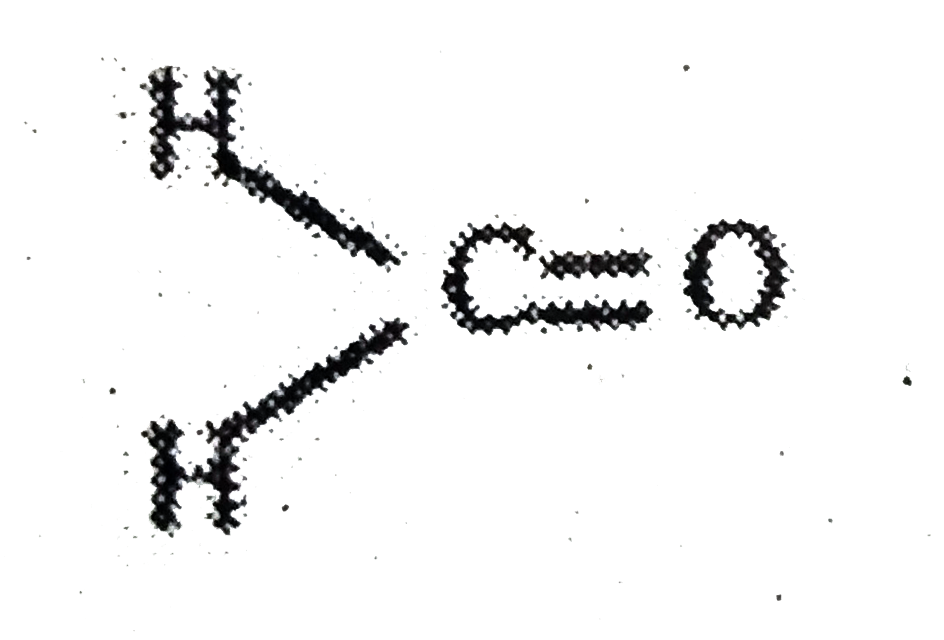Graphite has a two dimensional sheet-like structure in which each carbon atom is sp3 hybridized .
Step-by-Step Solution:
1. Understanding the Structure of Graphite:
- Graphite has a two-dimensional sheet-like structure. This means that the arrangement of atoms is primarily in two dimensions, forming layers.
2. Hybridization of Carbon Atoms:
- In graphite, each carbon atom is actually sp² hybridized, not sp³. This means that each carbon atom forms three sigma bonds with three neighboring carbon atoms and has one unhybridized p-orbital.
3. Bonding in Graphite:
- Each carbon atom in graphite is covalently bonded to three other carbon atoms, creating a hexagonal arrangement. This results in the formation of a planar structure.
4. Formation of Layers:
- The hexagonal arrays of carbon atoms form layers. These layers are stacked on top of each other, and the distance between the layers is approximately 340 picometers.
5. Interlayer Forces:
- The layers in graphite are held together by Van der Waals forces. These forces are relatively weak compared to covalent bonds, which accounts for the soft and slippery nature of graphite.
6. Electrical Conductivity:
- The unhybridized p-orbital of each carbon atom allows for the delocalization of electrons across the layers, which is responsible for the electrical conductivity of graphite.
Final Conclusion:
- Therefore, the statement in the question is incorrect. Graphite has a two-dimensional sheet-like structure in which each carbon atom is sp² hybridized, not sp³.
---
- Graphite has a two-dimensional sheet-like structure. This means that the arrangement of atoms is primarily in two dimensions, forming layers.
- In graphite, each carbon atom is actually sp² hybridized, not sp³. This means that each carbon atom forms three sigma bonds with three neighboring carbon atoms and has one unhybridized p-orbital.
- Each carbon atom in graphite is covalently bonded to three other carbon atoms, creating a hexagonal arrangement. This results in the formation of a planar structure.
- The hexagonal arrays of carbon atoms form layers. These layers are stacked on top of each other, and the distance between the layers is approximately 340 picometers.
- The layers in graphite are held together by Van der Waals forces. These forces are relatively weak compared to covalent bonds, which accounts for the soft and slippery nature of graphite.
- The unhybridized p-orbital of each carbon atom allows for the delocalization of electrons across the layers, which is responsible for the electrical conductivity of graphite.
- Therefore, the statement in the question is incorrect. Graphite has a two-dimensional sheet-like structure in which each carbon atom is sp² hybridized, not sp³.
Topper's Solved these Questions
- BOOK - ICSECHAPTER - SOLID STATEEXERCISE - ISC EXAMINATION QUESTIONS PART-I (Descriptive Question)30videos
SOLID STATE
- BOOK - ICSECHAPTER - SOLID STATEEXERCISE - ISC EXAMINATION QUESTIONS PART-I (Numerical Problems)6videos
SOLID STATE
- BOOK - ICSECHAPTER - SOLID STATEEXERCISE - ISC EXAMINATION QUESTIONS PART-I (Objective Question) (Complete the following statements by selecting the correct alternative from the choices given)1videos
SOLID STATE
- BOOK - ICSECHAPTER - SELF ASSESSMENT PAPER-8EXERCISE - QUESTIONS11videos
SELF ASSESSMENT PAPER-8
- BOOK - ICSECHAPTER - SOLUTIONSEXERCISE - MULTIPLE CHOICE QUESTIONS (Assertion and Reason based questions)10videos
SOLUTIONS
Similar Questions
Knowledge Check
- Question 1 - Select One
The isomeric alcohol which has a chiral carbon atom is:
An-butyl alcoholBiso-butyl alcoholCsec-butyl alcoholDtert-butyl alcohol
Allotropes of carbon: There are three forms of carbon. i.e., diamond, graphite and fullerene which exist in crystalline form. Graphite and diamond occur in nature. The structure of diamond is tetrahedral with sp3 hybridization and diamond exist in 3-D network solid. in graphite, carbon is sp2 hybridized. Each carbon linked to other carbon atom forms hexagonal ring. it has a layered structure. Diamond and graphite are purest form of carbon. Fullerene constitute a new family of carbon allotropes.
Consisting of large spheroidal molecule of compound with general formula C2n. common fullerene C6,C70, contain 5 and 6 membered rings.
Q. Which of the following statement is incorrect for graphite?View SolutionIn an sp-hybridized carbon atom,
View SolutionAssertion:In formaldehyde, all the four atoms are in the same plane

Reason:The carbon atom in formaldehyde is sp3 hybridizedView SolutionIn which of the following species central atom is notsp3 hybridized?
View SolutionThe structure of compound, which is formed by sP3d hybridization will be
View SolutionWhich molecules have sp3 carbon atoms :
View SolutionIn which of the following molecules, central atom is not sp3 hybridized?
View Solution

